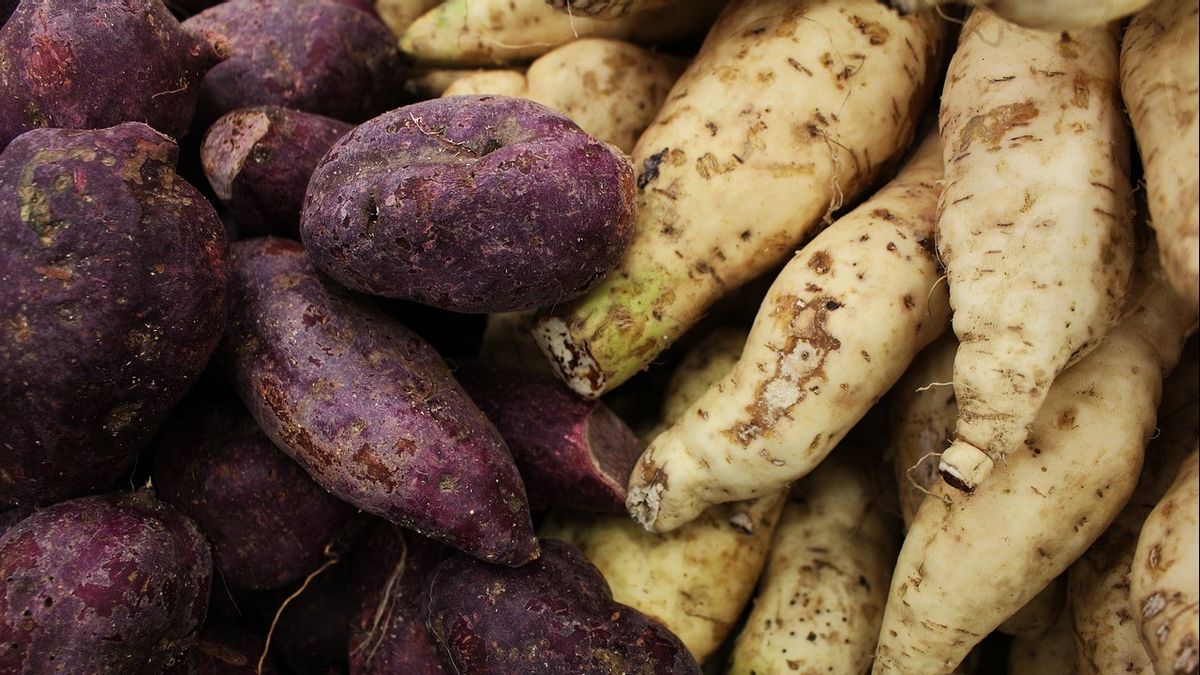YOGYAKARTA Sweet potatoes are one of the sources of staple foods rich in nutrition. Sweet potatoes have various varieties with varying skin and meat colors, such as yellow, purple, and white. The question is, why are the colors of sweet potatoes different?
In this article, the cause of the color difference in sweet potatoes and their nutritional content will be discussed. Summarized from various sources, Sunday, July 21, 2024, see the following explanation.
Generally, there are three types of sweet potatoes that are known to the public, namely white sweet potatoes, yellow, and red sweet potatoes to purplish.
The difference in color in the three types of sweet potatoes is related to differences in the content of caroteneoid and antosianin pigments.
Compositions and different intensities of caroteneoids and antosioanins produce colors on the skin and sweet potatoes.
In purple sweet potatoes, for example, this color comes from natural color substances called antosianin. Antosioanin itself is a group of pigments that causes redish color.
In yellow sweet potatoes, the color of tubers is influenced by the beta carotene compound which is abundant in yellow sweet potatoes. Beta carotene itself is an organic compound that is beneficial for the health of the body because it can function as pro vitamin A.
While on white sweet potatoes, the colors are related to the content of starch and sugar. Both natural ingredients make this type of sweet potato white. On the other hand, white sweet potatoes also do not contain anthocianine that can change the color of the tuber to purple.
BACA JUGA:
The following is the nutritional content of purple, yellow, and white sweet potatoes.
1. Purple turnover
In addition to giving the tuber a purple color, the antosianine content of purple sweet potatoes can be a strong antioxidant, so it can reduce inflammation and increase endurance. Even purple sweet potatoes contain 3 times more antosianin than blue berries.
In 100 grams of purple sweet potatoes cooked are the following nutrients:
In addition, purple sweet potatoes also contain other minerals such as manganese, copper, and iron. The surprising fact is that purple sweet potatoes contain potassium which is higher than bananas. In addition, purple sweet potatoes are rich in fiber and low sodium.
2. Sweet yellow potatoes
The nutritional content in yellow sweet potatoes is not much different from purple sweet potatoes. The following is information on the nutritional value of yellow sweet potatoes per 100 grams of BDD (Heavy Can Be Eated):
3. Sweet potatoes
For 100 grams of white sweet potatoes cooked, the nutritional content is:
That is the answer to the question of why sweet potatoes are different in color along with information on nutrients contained in purple, yellow, and red sweet potatoes. Hopefully this article can add insight to the loyal readers of VOI.ID.
The English, Chinese, Japanese, Arabic, and French versions are automatically generated by the AI. So there may still be inaccuracies in translating, please always see Indonesian as our main language. (system supported by DigitalSiber.id)


















